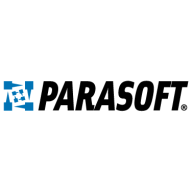

Parasoft SOAtest and SonarQube Server compete in software testing and code quality tools. SOAtest has the upper hand in API testing with its comprehensive features, while SonarQube's strength lies in its continuous code quality capabilities.
Features: Parasoft SOAtest provides virtual services, easy customization, and built-in validation tools. It supports API testing, rapid setup of functional test scenarios, and integration with source control tools. SonarQube Server offers static code analysis, integration into the development lifecycle, and supports multiple languages. It focuses on continuous code quality and unit test coverage.
Room for Improvement: Parasoft SOAtest could enhance its user interface and reporting features to be more user-friendly. It needs better integration with test management tools and a reduction in overall complexity. SonarQube Server requires enhanced security features, better documentation, and improved dashboard usability. Its complex setup and limited integration options are also noted areas for enhancement.
Ease of Deployment and Customer Service: Parasoft SOAtest is typically deployed on-premises with hybrid cloud options, offering flexibility for different infrastructure needs. Its customer service is rated positively, with prompt and knowledgeable technical support. SonarQube Server also offers diverse deployment options, including on-premises and public cloud. It benefits from widespread community support and valuable customer service, making it accessible for both small-scale and enterprise implementations.
Pricing and ROI: Parasoft SOAtest is perceived as an expensive tool but justifies its cost for organizations focused on robust API testing, offering significant ROI for functional test automation. SonarQube Server offers a free community edition and cost-effective paid versions that enhance code quality across various languages. Its open-source model provides substantial value and flexibility, although pricing for larger deployments can increase.
We found Parasoft SOAtest to be quick in building up test patterns, allowing us to create complex tests efficiently.
We see productivity increasing based on the fact that the code review is mostly automated, allowing the developer to fix the code themselves before assigning it to someone else to review, thus receiving that ROI.
I have seen a return on the investment from SonarQube Server (formerly SonarQube) because the value it adds relates to static code analysis and vulnerability assessments needed for our FDA approval process.
It's more about maintaining standards and being able to prevent issues before they occur.
They showed us where we can actually get those granular level reporting extracted for Excel, which was a quick guide.
The community support is quite effective.
I would rate the technical support for SonarQube Server (formerly SonarQube) as a 10 because we have not faced any specific issues that required us to contact tech support, which is a very rare case.
I find SonarQube Server (formerly SonarQube) very scalable because we're able to create a new repository and integrate all the tools on that project and it just works.
I would rate the scalability of SonarQube Server as a 10 because we can configure the server to scan multiple projects based on the number of lines.
I think SonarQube Server (formerly SonarQube) is stable, and we did not face any problems unless there was a power outage or if the LAN cable was plugged out.
It did not support enough of the protocols or cryptography formats we needed, which led us to create our own solutions.
In terms of improvements for Parasoft SOAtest, some features could be added or perhaps existing areas could be improved, such as lowering prices.
We need to change it to more of a portfolio report, where configuring or setting up things on the portfolio requires tagging at the ADO level.
As soon as I see that they've got a new feature that integrates AI that is not as generative as other GenAI platforms that actually generate the code and help developers develop faster, I believe that capability is lacking.
If I fix some vulnerabilities today, they reappear in the next scan, and there will be completely different issues that need to be fixed.
Parasoft SOAtest is expensive, but it was acquired because the company was dissatisfied with Quick Test Pro.
I would rate the pricing for SonarQube Server (formerly SonarQube) as an 8, where 1 is very cheap and 10 is very expensive, because Coverity is very expensive, and while SonarQube is not cheap, it is still less expensive than Coverity.
They always offer around a two-year contract, but we always take a one-year contract because it's expensive.
The freemium version of SonarQube Server offers excellent value, especially compared to the high costs of Snyk.
Parasoft SOAtest is very good at ensuring tests don't pass or fail until they genuinely pass or fail.
Parasoft SOAtest improves the quality of the application, increases security and security compliance, and it is a cost-effective tool.
The most valuable features of SonarQube Server (formerly SonarQube) for us include having control of the rules, enabling and disabling them.
Some of the static code analysis capabilities are the most beneficial.
We use SonarQube Server's centralized management and visualization of code quality metrics on the dashboard because that's the executive dashboard that we send to the executives to show where we are in terms of quality, security, and where the company can improve.
| Product | Market Share (%) |
|---|---|
| SonarQube Server (formerly SonarQube) | 19.7% |
| Parasoft SOAtest | 0.5% |
| Other | 79.8% |


| Company Size | Count |
|---|---|
| Small Business | 9 |
| Midsize Enterprise | 3 |
| Large Enterprise | 22 |
| Company Size | Count |
|---|---|
| Small Business | 32 |
| Midsize Enterprise | 21 |
| Large Enterprise | 75 |
Parasoft SOAtest delivers fully integrated API and web service testing capabilities that automate end-to-end functional API testing. Streamline automated testing with advanced codeless test creation for applications with multiple interfaces (REST & SOAP APIs, microservices, databases, and more).
SOAtest reduces the risk of security breaches and performance outages by transforming functional testing artifacts into security and load equivalents. Such reuse, along with continuous monitoring of APIs for change, allows faster and more efficient testing.
SonarQube Server enhances code quality and security via static code analysis. It detects vulnerabilities, improves standards, and reduces technical debt, integrating into CI/CD pipelines.
SonarQube Server is a comprehensive tool for enhancing code quality and security. It offers static code analysis to identify vulnerabilities, improve coding standards, and reduce technical debt. By integrating into CI/CD pipelines, it provides automated checks for adherence to best practices. Organizations use it for code inspection, security testing, and compliance, ensuring development environments with better maintainability and fewer issues.
What are the key features of SonarQube Server?Many industries implement SonarQube Server to uphold coding standards, maintain security protocols, and streamline their software development lifecycle. In sectors like finance and healthcare, adhering to regulations and ensuring reliable software is critical, making SonarQube Server invaluable. It is often integrated into CI/CD pipelines, ensuring that code changes meet set standards before deployment. This approach enhances productivity and maintains compliance with industry-specific requirements.
We monitor all Static Application Security Testing (SAST) reviews to prevent fraudulent reviews and keep review quality high. We do not post reviews by company employees or direct competitors. We validate each review for authenticity via cross-reference with LinkedIn, and personal follow-up with the reviewer when necessary.